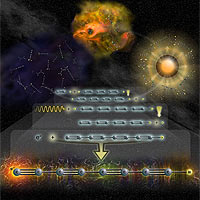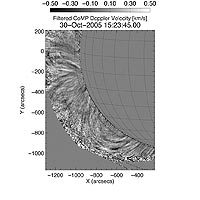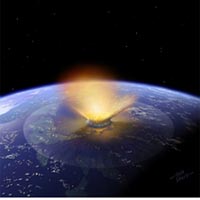sponsored by : career builder and developer network careerbd.net
 Saying No to Yourself: The Neural Mechanisms of Self-Control
Saying No to Yourself: The Neural Mechanisms of Self-Control
To do or not to do? We ask ourselves this question constantly, and our answers shape the quality and even the length of our lives. Try to make it through the yellow light? Tell the boss what you really think of that new haircut? Turn on the tube while your spouse is talking to you? These quick, go/no-go decisions can have lasting consequences. Yet while much recent neuroscience has examined the neural dynamics underlying choices between alternate actions (Take Action X or Action Y), few studies have looked at brains as people decide whether to take or cancel a particular action they've already planned or considered (that is: Take Action A or not). The paper reviewed below considers exactly this. As reviewer Martha Farah describes, the study found that the ability to halt a considered action -- to cancel that urge to gun the engine, laugh out loud, or turn on the boob tube -- depends at least partly on a band of cortex that works better in some of us than others. The implications run from the practical to the philosophical.
Just Say No to Yourself: The Neural Mechanisms of Self-Control
Martha J. Farah
Center for Cognitive Neuroscience
University of Pennsylvania
Back in the early 1980s, I remember telling a smart, exceedingly self-assured Harvard University philosopher about the seminal work of the cognitive psychologist Saul Sternberg, who had shown how mental operations could be analyzed into their elementary components by measuring people's reaction times in laboratory tasks. Sternberg's approach, which formed the methodological basis for much of the "cognitive revolution" in psychology, did not impress this lover of complexity and ambiguity; the philosopher denied that any mental process as simple as Sternberg's lab task -- deciding whether or not a single digit was included in a small "target set" of digits -- could help us understand human thought.
I thought of this fellow when I read a recent paper titled "To Do or Not to Do: The Neural Signature of Self-Control," by Marcel Brass and Patrick Haggard, in a recent Journal of Neuroscience. What he would think of the idea that having someone decide whether to push a button while lying in a scanner could tell us something about self control? I have a feeling he'd conclude that cognitive neuroscientists are just as deluded as cognitive psychologists. And, as I did in the 1980s, I would disagree with him. Science often makes progress by simplifying; think of Galileo and his frictionless planes.
To Push or to Not Push
Brass and Haggard's simplification of self-control involved a very simple act (pressing a button) and a very simple form of control (foregoing the button press). On each trial of the fMRI study, subjects were given three seconds to initiate a button press. They decided when to press while watching a simple clockface with a sweep second hand measuring the passing time. They were allowed to press the button at any time during this three seconds, but they were asked to note the position of the clock hand when they decided to press. This method gave Brass and Haggard a voluntary, subject-initiated action that could be localized in time, allowing them to make a functional magnetic resonance image (fMRI) of brain activity associated with the decision to act; that is, they could focus on the brain activity recorded at the time the subjects decided to press the button.
In some trials, the subjects were also asked to withhold the action (that is, to not push the button), stopping themselves at the last possible instant. Brass and Haggard hypothesized that taking an fMRI during this halted action would reveal a difference in brain activity between the straightforward voluntary action trials and the trials in which the subjects exercised self-control. The idea, as Haggard and Brass put it in their paper, was to investigate the neural underpinnings of "an important but neglected aspect of intentional action," which is the simple decision, once an act is contemplated, whether or not to perform it.
In this study, as in previous ones cited by Brass and Haggard, the initiation of a voluntary action activated the supplementary motor area (SMA) of the prefrontal cortex. The SMA, which is associated with the planning of movement, was activated during trials in which subjects decided to press and did press, and it was also activated during trials when subjects decided to press and then stopped themselves. This confirmed the researchers' assumption that the SMA was recruited, and the action planned, in both the go and the no-go trials.
Of course, the big news is what happened on self-control trials. What was activated when people stopped themselves from pressing after mentally initiating the button press, compared with when they went ahead and pressed? Halting the action activated the dorsal fronto-medial cortex, or dFMC (also known as Brodmann Area 9), which is further forward in the brain than the SMA, as well as insular cortex. The authors concluded that the dorsal medial frontal cortex was the source of the inhibitory signal, supporting this contention with two different correlational analyses. First, they found that the more a subject was able to activate this region, the more often he or she was able to inhibit the initially intended action. Second, they found that the more activated this frontal region was on a given trial, the less activated was the motor region involved in executing the actions.
And what about the insula, which also activated during the self-control trial? The insula has previously been associated with bodily experiences of emotion. In this case Brass and Haggard suggest that the insular activation reflects the visceral sense of frustration or "let-down" that accompanies the last-minute cancellation of the action.
Thinking on a Higher (or at Least More Frontal) Plane
Brass and Haggard point out that the area associated with self-control in their study, the dorsal front-medial cortex, is different from areas associated with initiating actions and from areas associated with inhibiting more automatic responses to stimuli, such as blinking or flinching at sudden movement. This difference is important. Consider a paradigm case in which self control is needed: someone who is trying to kick his heroin habit thinks about grabbing his wallet, putting on his coat, and walking to the corner where the drug dealers do business. Pressing a button may seem very simple and inconsequential compared to these actions. But both are voluntary, self-initiated actions; and inhibiting or deciding against either, this study suggests, requires adequate activation of the dorsal medial frontal cortex. If this dFMC activation is indeed required, then one's ability to control impulses would depend partly on how robustly that area responds to or aids in any effort to control the impulse.
Implications
Why is it important to know what brain systems underlie self control? Many neuropsychiatric disorders, from substance dependence to personality disorders to attention deficit disorder, involve impairments of self control. Basic research such as this study may eventually lead to a better understanding of the systems responsible for these disorders, as well as for differences in people's ability to control our less constructive impulses, such as the urge to say or do something ugly. As Brass and Haggard put it in their introduction, "[The] decision whether to act often has critical consequences. For example, there is a clear distinction between intending to hit someone and actually hitting them."
The research also touches on the age-old problem of free will. If physical processes in the brain cause our actions, then how can there be free will? How can we be held responsible for our behavior? Can't we just all plead "my brain made me do it"? Brass and Haggard's results do not solve this puzzle, but they do reveal some important new features of the puzzle. Their results illuminate a very important aspect of the brain's control of behavior -- the ability to hold off doing something after you've developed the intention to do it , which one might call "free won't" as opposed to free will. From the broader perspective of reconciling our identity as free moral agents with our identity as physical brains, this discovery of an area apparently associated with "free won't" makes the "brain" side of the equation a little more interesting and nuanced. Our brains don't just "make us do it"; they also have specialized systems for stopping us from doing it.

 IBM researchers announced they've made major strides in nanotechnology by studying how to build storage and other computing devices out of components no bigger than a few atoms or molecules.
IBM researchers announced they've made major strides in nanotechnology by studying how to build storage and other computing devices out of components no bigger than a few atoms or molecules.






